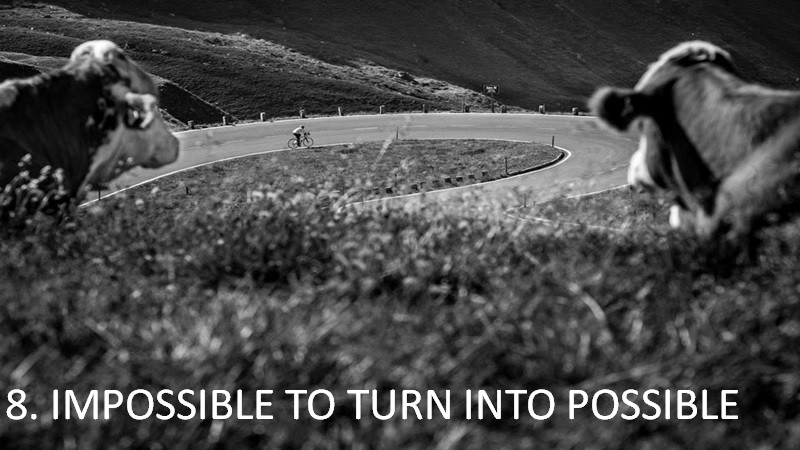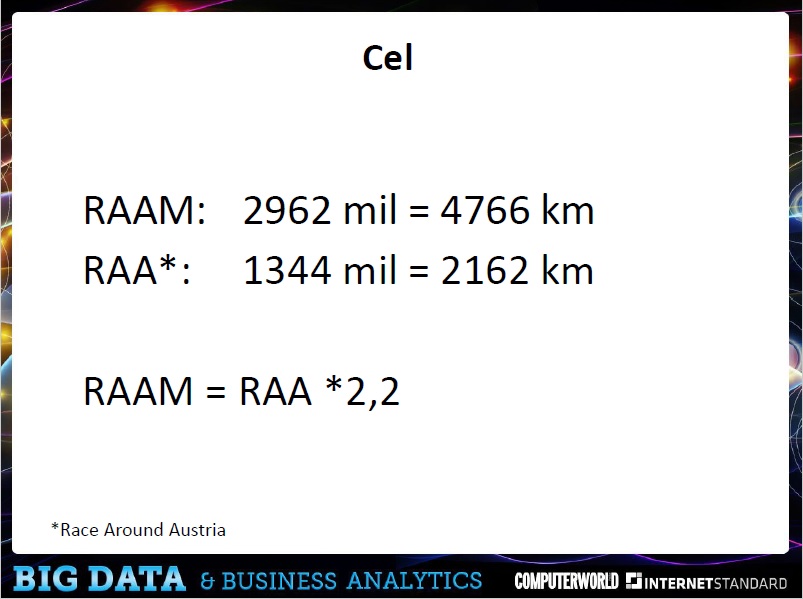HOW TO FINISH A REALLY LONG RACE? STAGE 8. IMPOSSIBLE TO TURN INTO POSSIBLE
Reading time: about 5 minutes

In 2013, I barely managed to finish Race Around Austria. Unofficial. The time limit was 5.5 days. I arrived at the finish line after 5 days, 12 hours and 51 minutes. In line with my 10-year plan, I had two more years to go to the RAAM. But that would require a budget for two years of preparation and long distance racing. Additionally, I knew that Janek Lipczyński was also going to solo RAAM in 2014. So if I wanted to be the first Pole to finish this race, I had to start that year. Finally, Janek did not go, but this pressure turned out to be helpful for me.
After returning from Austria, I had actually 9 months to prepare for the RAAM. I felt there was a huge gap between my last RAA score and the condition needed to complete the RAAM within the time limit, i.e. 12 days. I decided to calculate it ...
4,800 km in 12 days is 400 km per day. Let's compare RAAM and RAA in terms of distance...

RAAM is more than 2x longer. How about meters of elevation?

RAAM is on average 65% as mountainous as RAA. BTW - Race Around Poland with a distance of 3600 km and an elevation of 30000Hm is more mountainous than the RAAM, but less mountainous than the RAA.
This is what my RAA 2013 result looked like:

And this is what it should look like in RAAM 2014:

So in RAAM on more than 2x longer distance I have to be a bit faster on average than in RAA !!!
I was asking myself - what average speed should I have in RAAM after covering RAA distance?
To answer this question, I had to use the data of players who finished RAAM shortly before the time limit. If I had checked their averages at the checkpoint corresponding to the RAA distance, I would have got the answer. So I used the data from Chris "Hoppo" Hopkinson, who in 2013 finished RAAM in 11d 21h 51m.

The RAA distance is somewhere in Kanzas, between TS23 in Ulysses and TS24 in Montezuma. Hoppo did the RAA distance in 5 days and 2 hours, it seemed. What did that mean for me?

I had to be 9% faster than my RAA result! And then drive another 2600 km.
Just in case, I checked that Chris's case was not very individual. I compared the RAA times with the RAAM times between TS23 and TS24 for other riders who finished RAA first and then RAAM.

With a minor error, both riders finished RAA and TS23 / 23 in a similar time. Moreover, Gerald improved by 4%. I needed 9% ...
But that's not all. I could have come across unfavorable weather. But how to take that into account? It wasn't easy, but I had to assume something. I have compiled the times of the RAAM solo winners in recent years and calculate a function to describe the trend.

I found that the greatest deviation of the actual result from the trend value includes the weather conditions. This deviation is 7.9%. I had to take them into account, i.e. be prepared for the worst weather.
It turned out that I should be 17% faster !!! Is it possible? At first glance, not really.
I started to ponder what can I improve? I remembered Christoph Strasser's words that you have to work in 3 areas: physical preparation, mental preparation and team performance. Or maybe there are more of these areas, or I could write them down more specifically? If there were, for example, 10 factors and working with each of them would improve me by 2% each, that would be it!
I went to the coach - Wojtek and asked how much faster I would be after 2200 km, if I increased the volume of training by 60-70%? I was able to do so much in the last season of preparation. The answer was: "Not sure. It will rather help you in the second half of the race." I defined the areas we could improve and calculated or assumed (when I couldn't calculate) how it would affect the RAAM performance. For example, due to Shermer's neck I lost 4 hours in Austria, which is 3% of my result. By doing preventive exercises, I was able to save this time in the USA. I didn't know how much the mental exercises would bring me. I assumed 2%. In fact, they did much more. Probably without mind work, I wouldn't have finished RAAM ...
This is how the table looked like:

After summing up, there was a profit of over 17%. It looked real. Additionally, it gave me a plan on what to work on. And most of all, I gained relative peace and concentration on action.
How did it go in practice? In Ulysses I was 13 minutes ahead of Hoppo time and in Montezuma 3 minutes past. So the reality has matched quite well with the planning. In professional sport, this approach is called "marginal gains". In 2013, I didn't know about it ...
I finished the entire race 4 hours and 27 minutes before the 12-day limit.
Photo: Jacek Turczyk (Race Around Austria 2013)
- Author: Remek Siudziński
- Date: 25.04.2024





